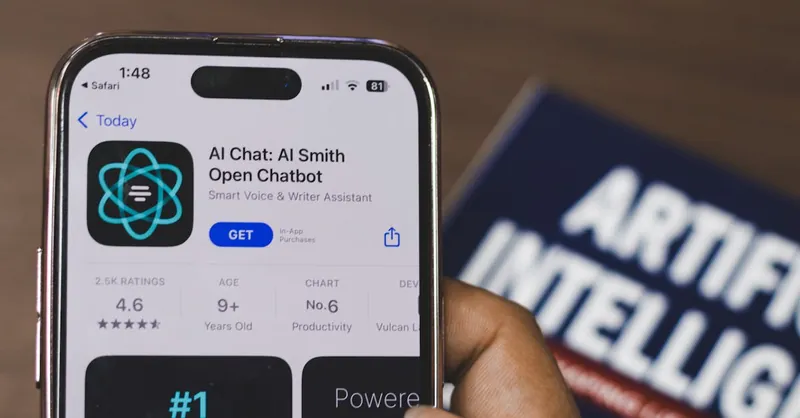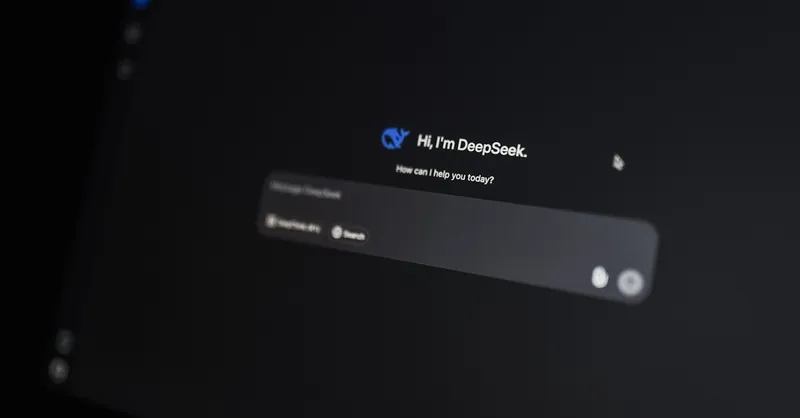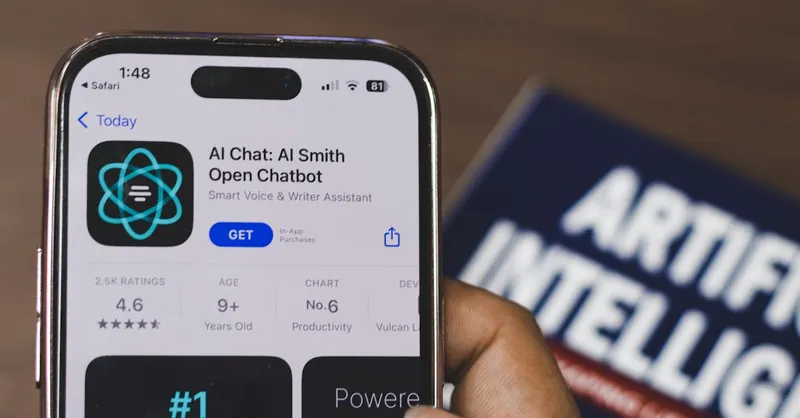Boost Productivity with Chatbots: Top AI Automation Tactics
Category: Productivity & Automation
Unlocking Peak Productivity with Chatbots
If you're a professional, entrepreneur, or tech enthusiast keen on harnessing AI to supercharge your workflow, you're in the right place. Finding effective ways to boost productivity with chatbots isn't just about adopting trendy tech—it's about embedding smart automation tools that save time, reduce errors, and enhance engagement. You likely arrived here searching for actionable methods to integrate chatbots seamlessly into your daily operations or business processes without getting lost in complex jargon or ineffective solutions. This article dives beyond generic advice to reveal proven strategies and insights tailored for users who know the value of technology but want clear steps to maximize chatbot potential. From enhancing customer support to automating repetitive tasks, we’ll cover critical angles that make chatbot adoption a game-changer. By the end, you'll have a comprehensive roadmap to deploying chatbots that genuinely drive productivity, letting you focus on what matters most—growing your business or optimizing your performance. Let’s explore how cutting-edge AI chatbots can transform your productivity landscape starting today.
- Unlocking Peak Productivity with Chatbots
- Understanding Chatbots: Definitions, Types, and Key Capabilities
- The Business Case: How Chatbots Accelerate Productivity Across Industries
- Identifying Tasks Best Suited for Chatbot Automation
- Boosting Customer Support Efficiency with Chatbots
- Using Chatbots for Internal Workflow and Task Management
- Integrating Chatbots with Other Productivity Tools and Platforms
- Measuring Chatbot Impact: Metrics and KPIs to Track Productivity Gains
- Overcoming Common Chatbot Implementation Challenges
- Future Trends: AI Innovations That Will Shape Chatbot Productivity Enhancements
- Best Practices for Scaling Chatbot Use Without Losing Efficiency
Understanding Chatbots: Definitions, Types, and Key Capabilities
To fully leverage chatbots as a productivity booster, it’s essential to understand what chatbots are and the core differences between their main types. At their essence, chatbots are software programs designed to simulate human conversation through text or voice, typically enabling users to interact with digital systems more intuitively and efficiently. This conversational interface allows automation of routine tasks, swift information retrieval, and proactive customer or internal support without human intervention.
Chatbots generally fall into two broad categories:
-
Rule-Based Chatbots
These operate on predefined scripts and decision trees. They respond to specific keywords or commands with fixed replies, making them reliable for straightforward, structured queries like FAQs, booking confirmations, or simple task automation. While limited in handling unexpected inputs, rule-based chatbots excel in environments where workflow consistency is critical and predictable. -
AI-Driven Chatbots
Powered by natural language processing (NLP) and machine learning, AI chatbots understand context, interpret nuances, and learn from interactions. This allows them to engage in more dynamic conversations, offering personalized assistance, handling complex queries, and continuously improving their performance. AI-driven bots are transformative for productivity as they can adapt to diverse scenarios and reduce the need for human oversight.
Core Capabilities That Drive Productivity
Both chatbot types include features that uniquely contribute to optimizing workflows and boosting efficiency:
- 24/7 Availability: Chatbots eliminate downtime by providing around-the-clock responses, ensuring tasks and support requests are handled promptly.
- Instantaneous Response Time: This reduces wait times and accelerates decision-making processes for users and customers alike.
- Task Automation: From scheduling meetings and processing transactions to generating reports, chatbots automate repetitive tasks, freeing human resources for higher-value work.
- Multichannel Integration: Chatbots can operate seamlessly across websites, messaging apps, and CRM platforms, centralizing communication and simplifying user experiences.
- Data Collection & Insights: By capturing interaction data, chatbots help optimize processes and identify bottlenecks, enabling continuous improvement in productivity.
Understanding these foundational elements allows professionals to select and implement chatbot solutions that align with specific productivity goals, laying the groundwork for impactful automation in any business or workflow.

Image courtesy of Sanket Mishra
The Business Case: How Chatbots Accelerate Productivity Across Industries
Chatbots are revolutionizing productivity by automating core processes and transforming workflows across multiple industries. Their ability to handle routine tasks with speed and accuracy translates into real-world benefits including cost savings, faster response times, and improved employee focus on strategic priorities. Let’s explore concrete use cases demonstrating how chatbots drive measurable productivity gains in key sectors:
E-Commerce: Streamlining Sales and Support
In e-commerce, chatbots serve as virtual sales assistants that guide customers through product discovery, inventory checks, and checkout, reducing cart abandonment rates. They deliver instant customer support around the clock, answering FAQs, processing returns, and tracking shipments without human intervention. By automating these repetitive interactions, e-commerce businesses can handle peak demand efficiently while freeing customer service teams to manage complex issues that require personalized attention.
Customer Service: Enhancing Responsiveness and Accuracy
Customer service departments leverage AI chatbots to provide 24/7 multi-channel support via chat, email, and social media platforms. Chatbots instantly retrieve customer account information, troubleshoot common problems, and escalate cases when needed. This reduces average handling times and boosts first-contact resolution rates, enabling teams to focus on high-impact service improvements and proactive outreach. The cumulative effect is a significant uplift in customer satisfaction and operational productivity.
Marketing: Personalization at Scale
Marketing teams utilize chatbots to deliver personalized campaigns, nurture leads, and conduct interactive surveys, automating outreach that traditionally requires significant manual effort. Chatbots analyze user behavior in real-time to tailor content and product recommendations, increasing conversion rates without expanding marketing headcount. By automating these engagement workflows, chatbots accelerate campaign execution and provide valuable insights that refine future marketing strategies.
Internal Operations: Optimizing Employee Workflows
Within internal business operations, chatbots automate scheduling, IT helpdesk support, onboarding, and knowledge management. Employees benefit from instant access to resources and automated task reminders, enhancing daily productivity. For HR and IT departments, chatbots reduce inquiry volume and automate routine requests, allowing teams to focus on strategic initiatives and innovations rather than repetitive administrative work.
By integrating chatbots in these critical areas, organizations across industries achieve tangible productivity improvements that directly impact their bottom line. The scalability, adaptability, and efficiency chatbots bring empower businesses to meet evolving demands faster while optimizing human resource allocation—making a strong business case for widespread chatbot adoption.

Image courtesy of cottonbro studio
Identifying Tasks Best Suited for Chatbot Automation
One of the most critical steps in maximizing productivity with chatbots is selecting the right tasks for automation. Not every process benefits equally from chatbot integration, and attempting to automate overly complex or infrequent tasks can lead to costly implementation challenges and low return on investment (ROI). To avoid overcomplication and drive meaningful efficiency gains, focus on identifying repetitive, time-intensive, and rule-driven activities that are prime candidates for chatbot support.
Key Characteristics of Tasks Ideal for Chatbot Automation
-
High Frequency and Repetitiveness
Tasks that occur regularly and follow predictable patterns, such as answering common customer questions or processing standard requests, are perfect for chatbots. Automating these repetitive interactions frees up human resources for more complex work while ensuring consistent, error-free execution. -
Structured and Rule-Based Workflows
Processes that involve clear decision trees and defined inputs—like booking appointments, order tracking, or data entry—fit well with both rule-based and AI-driven chatbots. These tasks don't require deep subjective judgment, which minimizes risks and streamlines chatbot development. -
Time-Consuming Manual Steps
Activities that consume valuable employee time but don’t add proportional strategic value are prime automation targets. Examples include scheduling meetings, rating support tickets, or sending reminders. Chatbots accelerate these workflows, reducing bottlenecks and improving overall throughput. -
High Volume Customer or Employee Interactions
When chatbots handle frequent user inquiries, whether customer support questions or internal IT helpdesk requests, businesses benefit from faster response times and reduced human workload. This scalability is crucial for maintaining performance during peak periods without adding staff.
Tasks to Approach with Caution
While chatbots excel at structured, high-volume tasks, certain areas are less suited for immediate automation:
-
Highly Subjective or Complex Decision-Making
Tasks requiring nuanced understanding, empathy, or creative problem-solving are beyond the current capabilities of most chatbots and may frustrate users if automated prematurely. -
Sensitive or Compliance-Heavy Processes
Automation involving confidential data or legal compliance needs strict validation before chatbot deployment to avoid security risks and regulatory issues.
By strategically selecting tasks that align with chatbot strengths, you ensure maximum productivity gains without introducing unnecessary complexity or workflow disruptions. Prioritizing automation of high-impact, repetitive processes enables a smoother implementation path and delivers quicker, measurable ROI, setting a strong foundation for expanding chatbot capabilities over time.

Image courtesy of Ivan Samkov
Boosting Customer Support Efficiency with Chatbots
One of the most impactful ways chatbots boost productivity is by automating customer support operations, which traditionally demand significant time and manpower. By handling routine inquiries such as Frequently Asked Questions (FAQs), chatbots drastically reduce the workload on support teams, allowing human agents to focus on more complex and high-priority issues. This automation not only accelerates response times but also ensures consistent, accurate answers that enhance overall user satisfaction.
Automating FAQs for Instant Resolution
Chatbots excel at managing FAQs by providing instant, 24/7 access to commonly requested information like product details, return policies, or troubleshooting steps. This instant resolution reduces friction for customers and decreases ticket volumes handled by support staff. Well-designed FAQ chatbots can understand natural language queries and continuously update their knowledge base, ensuring that information remains current and relevant.
Streamlining Appointment Scheduling
Another productivity enhancer is chatbot-driven appointment scheduling automation. Instead of manual back-and-forth communication, users can book, reschedule, or cancel appointments directly through the chatbot interface. The chatbot checks real-time availability, sends confirmations and reminders, and updates calendars automatically, preventing double bookings and minimizing no-shows. This seamless process saves valuable time for both customers and administrative teams.
Efficient Issue Triage and Routing
AI-powered chatbots can perform initial issue triage by gathering essential details from users and classifying incoming requests based on urgency and category. This intelligent triage facilitates quicker routing to the appropriate human agents or departments, significantly reducing response delays and enhancing resolution efficiency. By automating the intake process, helpdesk teams can prioritize cases better and prevent bottlenecks during peak times.
Implementing chatbots for these core customer support functions results in substantial time savings, faster problem resolution, and improved customer experience. Organizations unlocking these benefits gain a competitive edge by delivering consistent support quality at scale while optimizing internal resource allocation. Robust chatbot automation in support workflows is therefore a cornerstone of modern productivity strategies.

Image courtesy of MART PRODUCTION
Using Chatbots for Internal Workflow and Task Management
Beyond customer-facing applications, chatbots are powerful tools for streamlining internal workflows and improving task management within organizations. By automating routine activities like employee onboarding, meeting scheduling, reminders, and data retrieval, chatbots significantly reduce administrative burdens and accelerate daily operations, allowing teams to focus on strategic priorities.
Employee Onboarding and Training Assistance
Chatbots simplify the onboarding process by delivering consistent, on-demand access to training materials, company policies, and FAQs. New hires can interact with the chatbot to:
- Receive personalized orientation schedules.
- Get immediate answers about HR procedures, benefits, and IT setups.
- Complete mandatory compliance checklists and progress tracking.
This automated support accelerates onboarding timelines and enhances employee engagement while reducing repetitive queries directed to HR teams.
Automated Meeting Scheduling and Reminders
Scheduling meetings often consumes substantial time due to back-and-forth availability checks and calendar coordination. Chatbots integrate with calendars and messaging platforms to:
- Propose optimal meeting times based on participant availability.
- Automatically send invitations and confirm attendees.
- Deliver timely reminders and prompt follow-ups, reducing no-shows and ensuring meetings start punctually.
By automating these steps, chatbots eliminate scheduling conflicts and free administrative staff from manual coordination.
Instant Data Retrieval and Knowledge Management
Employees frequently spend time searching for documents, reports, or internal knowledge. Chatbots equipped with natural language understanding can quickly retrieve relevant data from internal databases, CRMs, or document repositories on demand. This reduces downtime spent navigating complex systems and facilitates faster decision-making.
Task and Deadline Management
Chatbots also enhance productivity by automating task tracking and sending proactive reminders for deadlines, status updates, or required approvals. Whether integrated into project management tools or standalone platforms, chatbot notifications help maintain accountability and keep team members aligned on priorities.
By embedding chatbots into internal workflows and task management practices, organizations unlock significant efficiency gains, reduce administrative overhead, and foster a more agile work environment. This internal automation complements external customer-facing chatbots, creating a comprehensive productivity ecosystem powered by AI and automation.

Image courtesy of fauxels
Integrating Chatbots with Other Productivity Tools and Platforms
To truly amplify productivity, chatbots must seamlessly integrate with the essential tools and platforms that underpin daily workflows—such as Customer Relationship Management (CRM) systems, project management software, and email platforms. This synergy enables chatbots to act as centralized automation hubs, bridging data and task execution across disparate applications to deliver a unified, efficient user experience.
Why Seamless Integration Matters
Without integration, chatbots operate in isolation, limiting their ability to access real-time data or trigger cross-platform actions. When integrated:
-
CRM Integration
Chatbots can instantly retrieve customer profiles, update contact records, log interactions, and automate follow-ups—streamlining sales, marketing, and support cycles. This reduces manual data entry and ensures teams have up-to-date information to personalize engagements. -
Project Management Alignment
Connected chatbots can create, assign, and update project tasks based on conversations or commands. They deliver automated reminders, status updates, and progress reports directly into team collaboration tools, helping maintain momentum and accountability without switching contexts. -
Email and Calendar Synchronization
Integration with email clients and calendars enables chatbots to schedule meetings, send notifications, and manage inbox triage, minimizing administrative overhead. Users benefit from automated responses and timely alerts that keep communication flows uninterrupted.
Productivity Gains through Integration
By unifying communication channels and operational tools through chatbot automation, organizations unlock:
- Reduced Workflow Friction: Fewer manual data transfers and less context-switching improve task completion speed.
- Improved Data Accuracy: Automated updates across platforms eliminate discrepancies and enhance reporting reliability.
- Enhanced User Experience: Employees and customers enjoy smoother interactions with faster, more relevant responses powered by integrated data access.
Ultimately, integrating chatbots with critical productivity platforms creates a powerful automation ecosystem that scales efficiency, empowers teams, and maximizes ROI on AI-driven tools. This approach transforms chatbots from standalone assistants into indispensable productivity catalysts embedded deeply within your technology stack.

Image courtesy of Matheus Bertelli
Measuring Chatbot Impact: Metrics and KPIs to Track Productivity Gains
To maximize the value of chatbot implementation, it’s crucial to establish practical frameworks for measuring their impact on productivity. Without clear metrics and Key Performance Indicators (KPIs), assessing chatbot effectiveness and justifying ongoing investment becomes challenging. Tracking the right data points empowers organizations to optimize chatbot performance, identify improvement areas, and demonstrate tangible productivity gains across business functions.
Key Metrics to Quantify Chatbot Effectiveness
-
Response Time Reduction
One of the most direct indicators of chatbot productivity is how much it decreases the average time taken to address inquiries or complete tasks. Faster response times lead to improved customer satisfaction, accelerated workflow, and reduced wait times for users—ultimately driving operational efficiency. -
Task Completion Rates
Measuring the percentage of successful interactions where the chatbot fully resolves a request without human intervention provides insight into automation effectiveness. High task completion rates mean fewer escalations, lower workloads on staff, and smoother processes. -
User Satisfaction Scores
Collecting feedback via post-interaction surveys or sentiment analysis helps gauge user experience with the chatbot. Positive feedback correlates with better adoption, trust, and continued engagement, which are essential for productivity improvements over time. -
Deflection Rate
This metric tracks the proportion of inquiries handled solely by the chatbot versus those passed to human agents. A higher deflection rate indicates effective automation of routine tasks, reducing human workload and operational costs. -
Error and Failure Rates
Monitoring instances where the chatbot fails to understand queries or provides incorrect information helps identify training gaps in AI models or flaws in rule-based logic. Reducing these failures is key to enhancing reliability and productivity.
Framework for Ongoing Optimization
To sustainably boost productivity, implement continuous monitoring and iterative improvements based on these KPIs:
- Establish baseline metrics before chatbot deployment to quantify initial impact.
- Set clear, achievable targets aligned with organizational productivity goals.
- Use analytics dashboards and reporting tools to visualize chatbot performance in real-time.
- Regularly review user feedback and error logs to refine conversation flows and AI training.
- Integrate data from chatbot interactions with broader business analytics to correlate performance with revenue, employee efficiency, and customer retention.
By systematically measuring and analyzing chatbot impact with response time, task completion, user satisfaction, deflection, and error metrics, organizations can unlock powerful insights that drive smarter automation strategies. This data-driven approach ensures chatbots evolve from simple tools into strategic assets that consistently enhance productivity, optimize resources, and deliver superior user experiences.

Image courtesy of Matheus Bertelli
Overcoming Common Chatbot Implementation Challenges
While chatbots hold immense potential for boosting productivity, successful implementation requires navigating several common challenges that can hinder adoption and effectiveness. Addressing these obstacles early with actionable strategies ensures your chatbot delivers consistent value and integrates smoothly into workflows.
Driving User Adoption and Engagement
A frequent barrier is resistance to change from employees or customers who may be unfamiliar or skeptical about interacting with chatbots. To foster enthusiastic adoption:
- Educate users clearly about the chatbot’s capabilities and benefits in simplifying tasks and saving time.
- Provide easy access channels and intuitive interfaces that minimize friction in starting conversations.
- Encourage gradual use by integrating chatbots into familiar platforms like messaging apps or internal portals.
- Solicit user feedback regularly and visibly act on it to build trust and demonstrate continuous improvement.
Ensuring Effective Chatbot Training and Evolution
For AI-driven chatbots especially, maintaining accuracy and relevance depends on high-quality training data and ongoing learning. Common pitfalls include poor understanding of user intents or outdated knowledge bases, leading to frustration and decreased productivity.
Key solutions include:
- Invest in comprehensive conversational design that anticipates diverse user queries and builds robust intent recognition.
- Use real interaction logs to continuously retrain AI models, refining responses and expanding capabilities based on evolving user needs.
- Implement fallback mechanisms and smooth transitions to human agents for situations the chatbot cannot handle, maintaining seamless user experience.
Maintaining Conversational Relevance Over Time
Chatbots must evolve with changing organizational priorities, product updates, and user expectations to stay productive. Stale or irrelevant conversations reduce chatbot value and discourage use.
To maintain relevance:
- Establish regular content audits to update FAQs, workflows, and knowledge repositories feeding the chatbot.
- Leverage analytics to monitor conversation trends and drop-off points, identifying areas needing enhancement.
- Align chatbot updates with business objectives and seasonal campaigns to deliver timely and targeted assistance.
By proactively addressing challenges around user adoption, effective chatbot training, and conversational relevance, organizations unlock the full productivity potential of chatbot automation. These strategic efforts minimize risks, maximize ROI, and create user-centric chatbot experiences that drive sustained operational efficiency and engagement.

Image courtesy of Airam Dato-on
Future Trends: AI Innovations That Will Shape Chatbot Productivity Enhancements
As AI technology continues to advance at a rapid pace, the future of chatbots promises even greater productivity gains driven by groundbreaking innovations. Emerging trends in Natural Language Processing (NLP), multi-modal interactions, and adaptive learning systems are set to redefine how chatbots support workflows, automate tasks, and engage users. Staying ahead of these developments equips businesses and professionals to unlock the next level of efficiency and effectiveness through smarter automation.
Next-Generation NLP: More Accurate and Context-Aware Communication
Future chatbots will leverage advanced NLP models capable of deeper context understanding, sentiment analysis, and intent recognition. This evolution enables chatbots to interpret complex, ambiguous queries with higher accuracy and provide responses that are more relevant, personalized, and human-like. Enhanced NLP will also improve multilingual support, allowing organizations to scale productivity across diverse global audiences without language barriers.
Multi-Modal Chatbots: Combining Text, Voice, and Visual Inputs
The rise of multi-modal chatbots will transform conversational AI by integrating text, speech, images, and even video inputs into seamless interactions. These chatbots will allow users to communicate naturally through their preferred mode—whether typing, speaking, or sharing visual content—while the bot processes and responds intelligently across formats. This capability will expand chatbot applications into more dynamic environments such as virtual meetings, remote collaboration, and hands-free device control, boosting productivity across varied use scenarios.
Adaptive Learning and Continuous Improvement
Adaptive learning algorithms will empower chatbots to self-optimize in real-time by analyzing user behavior, feedback, and environmental variables. Instead of relying solely on pre-programmed scripts or periodic retraining, chatbots will dynamically adjust their conversation strategies, recommend smarter workflows, and preemptively resolve issues before escalation. This makes chatbot automation more resilient, contextually aware, and capable of handling evolving business needs with minimal human intervention.
Integration with Emerging Technologies
Future chatbots will increasingly interface with complementary AI-driven tools such as robotic process automation (RPA), predictive analytics, and augmented reality (AR) platforms. This ecosystem approach will build end-to-end intelligent workflows where chatbots not only communicate but also trigger automated actions, deliver data-driven insights, and enhance immersive user experiences—all contributing to unprecedented productivity acceleration.
By embracing these future AI innovations, organizations can transform chatbots into versatile productivity powerhouses that intelligently augment human capabilities. Preparing for these trends today ensures your chatbot strategies remain cutting-edge, scalable, and primed to deliver measurable impact as the technology landscape evolves.

Image courtesy of Shantanu Kumar
Best Practices for Scaling Chatbot Use Without Losing Efficiency
Scaling chatbot implementations while maintaining or improving productivity requires a strategic approach focused on iterative improvement, robust user feedback loops, and an optimal balance between automation and human intervention. As organizations expand chatbot deployment across multiple channels and workflows, adhering to best practices ensures sustained efficiency gains without overwhelming resources or compromising user experience.
Embrace Iterative Improvement for Continuous Optimization
Scaling chatbots is not a one-time rollout but an ongoing process that demands regular refinement. Implement a cyclical approach where chatbot performance data and user interactions are systematically analyzed to identify areas for enhancement. Key actions include:
- Conduct A/B testing on conversation flows and feature sets to determine what drives the best productivity outcomes.
- Update chatbot knowledge bases and AI models frequently to incorporate new FAQs, emerging user intents, and business updates.
- Automate routine optimizations where possible, using AI feedback mechanisms that flag conversation bottlenecks and suggest improvements.
This iterative strategy transforms chatbot deployments into adaptable solutions that scale reliably while continuously improving accuracy, responsiveness, and relevance.
Establish Strong User Feedback Loops to Drive Engagement
User feedback is an invaluable resource for scaling chatbots effectively. Encourage both customers and employees to provide real-time input on chatbot interactions through surveys, ratings, or conversational prompts. Use this qualitative data to:
- Detect usability issues and pain points early.
- Prioritize feature development aligned with actual user needs.
- Build trust by demonstrating visible action based on user suggestions.
Integrating user insights into the chatbot improvement roadmap maintains high engagement levels and drives adoption, which is critical when expanding chatbot usage across larger user populations.
Balance Automation with Human Intervention for Sustainable Productivity
While chatbots boost productivity by automating repetitive tasks, it is essential to balance automation with timely human support to handle nuanced, complex, or sensitive situations. Best practices include:
- Implementing seamless escalation protocols that transfer conversations to human agents without friction when chatbots reach their limits.
- Monitoring chatbot performance metrics to identify when manual oversight is necessary to maintain service quality.
- Training staff to collaborate effectively with chatbots, focusing human expertise where it adds the most value.
Striking this balance ensures chatbot scalability does not degrade user satisfaction or workflow efficiency but rather augments human productivity sustainably.
By applying iterative enhancements, fostering open user feedback, and calibrating automation with human intervention, organizations can scale chatbot solutions confidently. These best practices form the foundation for sustainable chatbot-driven productivity that grows with your business needs while preserving efficiency and user trust.

Image courtesy of Sanket Mishra
